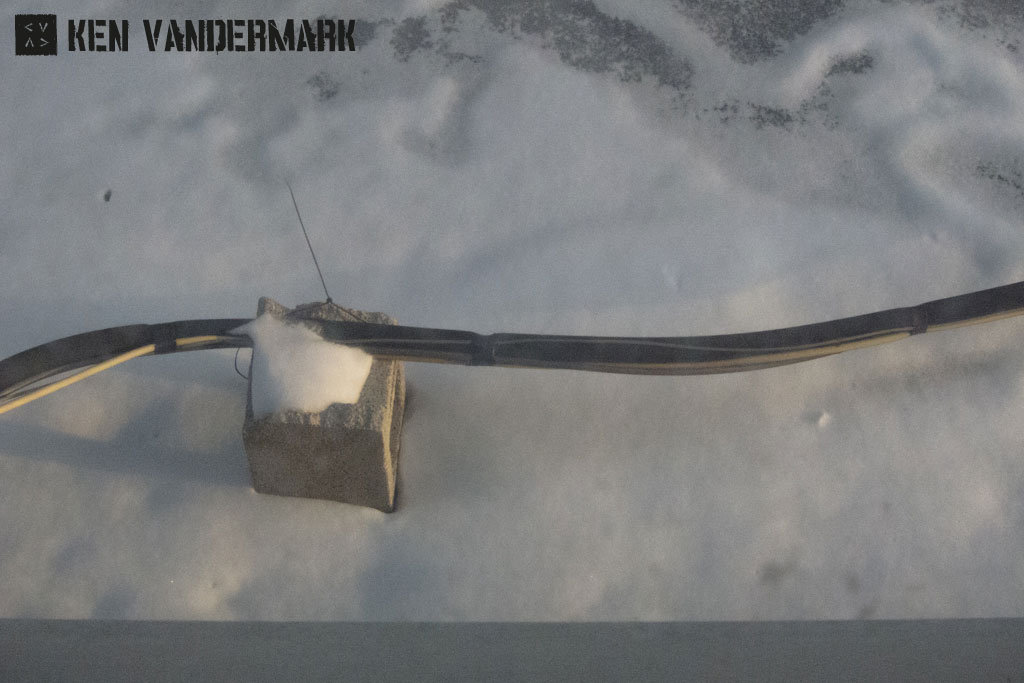

Audio One is a continuation of Ken Vandermark’s work with large groups, beginning with the now defunct Peter Brötzmann Chicago Tentet and his own Territory Band (in its different incarnations) and the still active Europe based Resonance Ensemble. The 10 piece Audio One is a Chicago-based ensemble featuring long-term musical partners of Vandermark – trombonist Jeb Bishop, sax player Dave Rempis, and drummer Tim Daisy (all three played in the Vandermark 5), reeds player Mars Williams (who played in Chicago Tentet and plays with Vandermark in Rempis’ Chicago Reeds Quartet), alto sax player Nick Mazzarella (who also plays in the Chicago Reed quartet), vibes player Jason Adasiewicz (who played on Vandermark’s Impressions of PO Music, Okka Disk, 2013) and bass player Nick Macri and viola player Jen Paulson (who play with Vandermark in The Margots).
This local ensemble allows Vandermark to work on a regular basis, rehearsing, performing, and exploring new compositional ideas, unlike his other groups and ensembles, which often feature international personnel. Audio One incorporates inspiration from the modern and free jazz legacy of Chicago, corresponding with seminal work of AACM artists as Anthony Braxton, Henry Threadgill and the Art Ensemble of Chicago, with funk and African music, and especially an Ethiopian influence.
Audio One’s third album was recorded live at the Constellation and the Sugar Maple clubs in Chicago on two consecutive nights in August 2014. As on many Vandermark projects, the album title, as well as his compositions, are musical homages, reflections of other artist’s work. The album is named after Austrian writer and poet Thomas Bernhard (1931-1989), one of the most important German-speaking authors of post world war II. The first online quality extended piece “Doble Negacion” is dedicated to American artist Michael Heizer who specializes in large-scale installations and earth art. This piece gains momentum – power and magnitude – patiently, transforming from atmospheric vibes and strings into a skeletal, infectious pulse and then a choir of reeds erupts and sings the call-and-response theme. Mid-piece it changes course with an open-ended and chaotic reeds interplay before the group resumes its playful and rhythmic mode. The second piece, “Boxers and Dancers”, is dedicated to the great Ethiopian sax player Getatchew Mekuria and to dancer and leader of the Fendika band Melaku Belay, with whom Vandermark toured and recorded. This is a funky piece that revolves around tight, addictive bass line, and its African-tinged theme is expanded and explored by the reeds choir, feeding the propulsive pulse in its turn.
The third piece, “Uitgraving” is dedicated to the Dutch-American abstract expressionist artist Willem de Kooning (1904-1997), and actually is an abstract, free-associative piece. There are few segments where the powerful drumming of Daisy dictates its contemplative, fast shifting course, but mostly is is fractured between quiet, introspective solos from all the musicians, dissected by brief chaotic interplay. The fourth and last piece, “Tape”, is dedicated to painter and installation artist Robert Irwin. It begins with a massive, Ethiopian-tinged reeds fanfare, soon transformed into rhythmic exploration of its moving theme, highlighting Adasiewicz’s crystalline vibes sounds. When the reeds choir returns in full power, Vandermark and Bishop exchange commanding, fiery solos throughout its coda.
Strong, interesting compositions. Excellent, opinionated musicians. Passionate, committed playing, full of energy. Brilliant album.
By Eyal Hareuveni
Originally published http://www.freejazzblog.org/2016/02/audio-one-what-thomas-bernhard-saw.html
© 2024 Ken Vandermark – musician & composer | Disclaimer